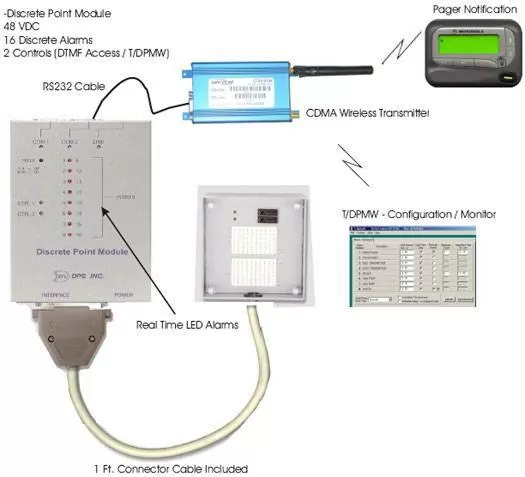Check out our White Paper Series!
A complete library of helpful advice and survival guides for every aspect of system monitoring and control.
1-800-693-0351
Have a specific question? Ask our team of expert engineers and get a specific answer!
Sign up for the next DPS Factory Training!

Whether you're new to our equipment or you've used it for years, DPS factory training is the best way to get more from your monitoring.
Reserve Your Seat Today
In this application, we've shown the Discrete Point Module with a CDMA (GSM available) Wireless Transmitter, allowing you to receive alarms to your pager from the DPM.
The -48V Discrete Point Module (DPM) has a capacity of 16 discrete inputs, and 2 control outputs. The 16 discrete inputs allow you to monitor 16 different environmental conditions. You can monitor such things as commercial power, door entry violation, room temperature (threshold crossing) etc.
The DPM communicates alarm and control status information through an internal 1200 baud "AT" type modem. In the event of an alarm or control point operation, the DPM dials out to a pager and sends the alarm information. It can also receive control commands from any T/Mon Master Station or Discrete Control Module (DCM) using the T/Mon Remote Interface Protocol (TRIP). The DPM can have up to 4 dial numbers defined. Each may be configured as alphanumeric, numeric or modem. Functions such as control point operation can be performed over a tone-dialing phone using DTMF dial codes. The DPM can be configured on site or over a phone line.
The DPM has many programmable features, such as back-up pager numbers and written alarm point descriptions. Configuring these features is easy using T/DPMW software for Windows. Programming is done locally through the serial port of a computer to the craft port of the DPM or by dialing the DPM from any modem-equipped PC. T/DPMW will also monitor the alarm states and operate control relays.